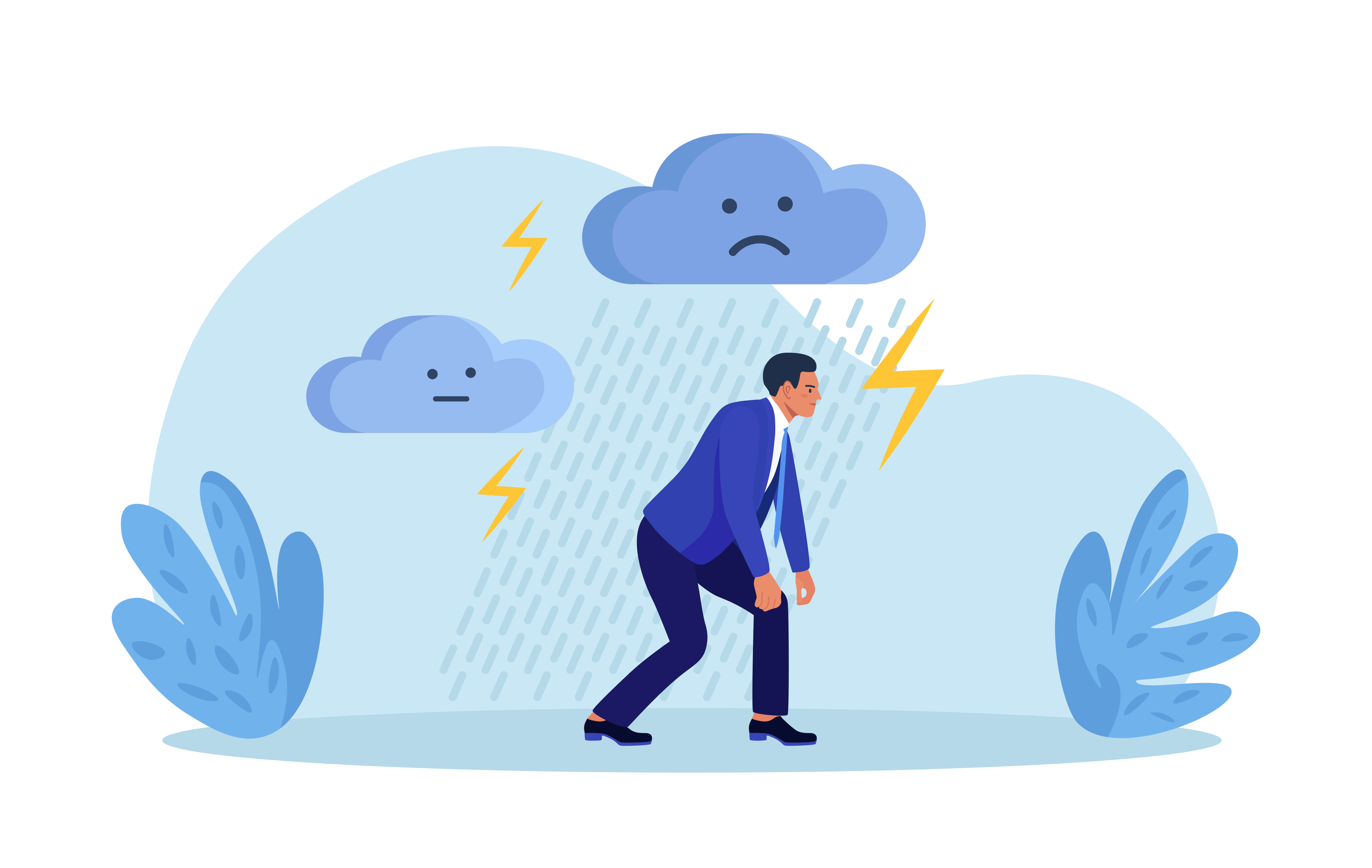One of the most prevalent mental health conditions among all ages is depression. Its effect on one’s emotional and physical being for a long time is considered a huge threat that should be managed immediately. Although, there’s a certain case that can bring a different light in terms of this depressive disorder, which is seasonal depression.
This type of depression is commonly known for its short occurrence. Despite that, it is still one of the disorders known for its recurrence. Thus, it should still be a matter of immediate response and seeking help to find out best coping action against this condition. Fortunately, we’ll uncover that aspect today in this blog. Let’s begin!
Understanding Seasonal Affective Disorder in the Philippines

Seasonal disorder, or most known as seasonal affective disorder (SAD), is a mood disorder that affects individuals in specific seasons. Usually during the cold months from late fall to winter where the winter blues happen. In short, it can be identified as winter depression due to its nature and timing.
While SAD is more commonly associated with countries that experience long, dark winters, in the Philippines it happens during the rainy season. The rainy season typically begins in June and lasts until around November. During this time, the country experiences frequent rain showers, cloudy skies, and shorter daylight hours. This change in weather and environmental conditions can have a significant impact on mental health, leading to mood changes and into depressive episodes.
Correlation Between the Rainy Season and Depressive Episodes
There is a correlation between the rainy season and depressive episodes. The rainy season is associated with increased feelings of sadness, low mood, and decreased motivation. The dull and gloomy weather, combined with limited outdoor activities, can contribute to a sense of isolation and loneliness.
Moreover, the less sunlight during the rainy season can disrupt the body’s natural production of serotonin, a neurotransmitter that regulates mood. These aspects can lead to an increase in depressive symptoms. Thus, it is important to be aware of these correlations and take steps to manage and prevent seasonal depression during this time.
Identifying Seasonal Affective Disorder (SAD)
Identifying whether or not you have seasonal depression is possible through recognizing the symptoms. At the same time, learning to understand how it differs from other types of depression is also important to verify if an individual has SAD.
So the main point about SAD is it is characterized by the onset of specific symptoms during particular seasons, which is rainy days in the Philippines. In short, what sets SAD apart is the seasonal pattern in which they occur.
How SAD differs from other forms of depression
As mentioned, seasonal depression differs from other forms of depression mainly because of the seasonal pattern. While major depression and other forms of depression can occur at any time of the year, SAD follows a specific pattern of onset and remission based on seasons change.
Unlike major depression, which can be triggered by various factors and does not have a specific seasonal pattern, SAD is characterized by a recurring pattern of depressive episodes during specific seasons, most commonly the winter months. This seasonal pattern is what sets SAD apart from other forms of depression and requires specific treatment approaches.
Symptoms of SAD
The symptoms of Seasonal Affective Disorder (SAD) are the same as other depression types and may generally include:
- sadness or low mood
- Lack of energy
- Changes in appetite
- Weight gain
- Difficulty concentrating or making decisions
- Loss of interest
- Oversleeping or difficulty waking up
- Suicidal thoughts
It is important to note that these symptoms typically occur in a seasonal pattern, with the onset of depressive episodes. If you or someone you know is experiencing these symptoms, especially in a recurring seasonal pattern, it may be indicative of SAD and seeking professional help is recommended.
Factors Contributing to Seasonal Depression in the Philippines
Several factors contribute to the prevalence of Seasonal Affective Disorder (SAD) during the rainy season. These factors contribute to the exacerbation of depressive symptoms in individuals. One thing in common among these factors is it causes disruption in the mental state of the patient, thus resulting in the overall sense of sadness or low mood.
Here are some of the contributing factors:

Limited sunlight exposure and Vitamin D deficiency
One of the key factors contributing to Seasonal Affective Disorder (SAD) is limited sunlight exposure. During the rainy season, cloudy skies and shorter daylight hours result in reduced sunlight exposure. This limited sunlight can disrupt the body’s natural production of serotonin, a neurotransmitter that helps regulate mood. Serotonin is known to have a positive impact on mental health, and a decrease in its levels can contribute to feelings of depression and low mood.
Furthermore, limited sunlight exposure during the rainy season can also lead to vitamin D deficiency. Sunlight is a primary source of vitamin D, and reduced sunlight exposure can result in lower levels of this essential vitamin. Vitamin D deficiency has been linked to symptoms of depression, and addressing this deficiency can be an important aspect of managing SAD.
Isolation
Meanwhile, isolation is a significant contributing factor to seasonal depression. The unfavorable weather conditions and limited outdoor activities can lead to increased isolation and decreased social interactions. Furthermore, it is quite known that isolation can have a negative impact on mental health and can exacerbate feelings of sadness and depression.
During the rainy season, it is important to stay connected with family and friends, even if it means finding alternative ways to socialize indoors. Engaging in activities that promote social interaction, such as virtual gatherings or hobbies that can be done indoors, can help combat feelings of isolation and improve overall mental well-being.
Oversleeping Due to Affected Circadian Rhythm
On the other hand, oversleeping is a common symptom and can be a contributing factor to developing SAD. It occurs due to the effect of the weather on the circadian rhythm. The circadian rhythm is the body’s internal clock that regulates sleep-wake cycles and other biological processes. Changes in daylight hours and disrupted daily routines during the rainy season can lead to an imbalance in the circadian rhythm, resulting in oversleeping and changes in sleep patterns.
Environmental stressors during the rainy season
Another possible factor that results in people developing SAD is the increased risk of floods and typhoons. This environmental stressor creates stress and anxiety, which can exacerbate depressive symptoms. Thus, showing how individuals can possibly develop SAD.
When to Seek Help From A Doctor
If you or someone you know is experiencing symptoms of Seasonal Affective Disorder (SAD) that are interfering with daily life, it is important to seek help from a doctor or mental health professional. While SAD is considered a subtype of depression, the symptoms and severity can vary from person to person.
It is recommended to seek professional help if the symptoms of SAD become severe or if there are thoughts of self-harm or suicide. Mental health services, such as counseling or therapy, can provide support and guidance in managing SAD. In some cases, medication may be prescribed by a doctor to help alleviate symptoms and improve overall well-being.
Preventive Measures to Combat Seasonal Depression
Managing depression like seasonal depression requires the need for preventive measures. By incorporating these measures into daily routines, individuals can improve their mental well-being and minimize the onset of SAD symptoms. Here’s how to achieve that kind of security and safety:

Increase Socialization with Family and Friends
This first step is an important preventive measure for combating seasonal depression. Engaging in regular social activities, even during the rainy season, can help alleviate feelings of loneliness and isolation. Spending quality time with loved ones can provide emotional support and improve mental health. Whether it’s through virtual gatherings, indoor activities, or simply staying connected through phone calls or messages, it is vital in preventing and managing SAD.
Be More Physically Active Through Workouts
Engaging in regular physical activity and workouts can have a positive impact on mental health and help combat seasonal depression. Exercise releases endorphins, chemicals in the brain that act as natural mood boosters and provide an antidepressant effect. Whether it’s indoor workouts, yoga, or taking advantage of breaks in the rain to go for a walk, incorporating physical activity into daily routines can improve mood and overall well-being. It is important to find activities that are enjoyable and sustainable to maintain a regular exercise routine and reap the mental health benefits.
Have Enough Sleep
Having enough sleep is crucial for maintaining overall mental health and preventing seasonal depression. Establishing a consistent sleep schedule and practicing good sleep hygiene can help regulate sleep patterns and improve symptoms of SAD. It is recommended to create a relaxing bedtime routine, avoid stimulating activities before bed, and create a comfortable sleep environment. This will help you fix your circadian rhythm.
Try Light Therapy
Light therapy or bright light therapy involves exposure to a bright light box or lamp that mimics natural sunlight. The light emitted from these devices helps regulate the body’s circadian rhythm and promotes serotonin activity, which can alleviate symptoms of depression. It is important to note that the sessions can last about 30 minutes to an hour each day and are most effective when done in the morning.
Professional Treatments and Therapies
In terms of treatment options, medication treatment and therapies are available for additional support and intervention. These treatments can be effective in managing and alleviating symptoms of SAD. Some of the commonly used professional treatments and therapies for SAD include:
Therapy for Seasonal Affective Disorder
Therapy, specifically cognitive behavioral therapy (CBT), can be an effective treatment. CBT focuses on identifying and challenging negative thought patterns and behaviors associated with depression. It helps individuals develop coping strategies and improve their overall well-being. Through therapy, individuals can gain insight into their symptoms and learn techniques to manage them effectively.
Medication to Manage SAD
In some cases, medication can be prescribed by a healthcare professional to manage symptoms of Seasonal Affective Disorder. These medications, such as serotonin-norepinephrine reuptake inhibitors (SNRIs) or tricyclic antidepressants (TCAs), can help alleviate the effects of SAD. It is crucial to work closely with a healthcare provider to determine the most suitable medication for individual needs and monitor any potential side effects.
Conclusion
Seasonal depression, particularly Seasonal Affective Disorder (SAD), is a challenging reality for many. The correlation between the rainy season and depressive episodes is alarming and learning to manage such connections must occur.
Seeking help from a doctor and implementing preventive measures can make a positive impact and help with your healing. Remember, mental health should also be a priority. That’s why if you are feeling blue and seasonal changes affect you, it’s time to seek help. Professional treatments and therapies are available to support you through this difficult time. Prioritizing your mental health and seeking appropriate care can help you combat seasonal depression effectively.



